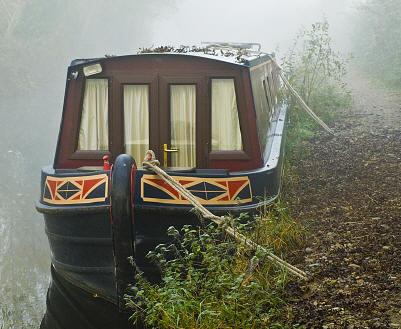|
|
 A club open to anyone who owns a Piper-built boat |

|
|---|---|---|
|
|
 A club open to anyone who owns a Piper-built boat |

|
|---|---|---|
|
Springs
Ever since we had Jess and a friend who is an experienced yachtsman told us about the benefit of springs we’ve been using them, but for the past few years I have been under the mistaken belief that the fender eyes welded onto the gunwales were only strong enough for fenders. Not so! Whilst emailing Dot I suddenly remembered that for ages I've been meaning to ask her if it was permissible to attach a ‘spring’ to them, so was delighted when she replied “Yes the fender eyes are perfect for springs and you don't get the rubbing-on-the-handrail problem” which is great news for us!
By chance Dot’s advice came just before a bank holiday weekend. Such weekends, and the following week, are noticeable for the increase in traffic, and an increase in speed too. I was impressed with the result; an instant improvement being demonstrated by my not having to keep tightening up the bow rope at all. Since then we’ve managed two months, including a school holiday week, without having to adjust the lines once. Thank you Dot! Then this last year, whilst out on
Jess, we found ourselves more than once wanting to tie up where there were no
rings and no piling,
Even when using piling hooks I find an
additional hook helps. I’ve always been in the habit, where possible, of
positioning the hooks next to the piling tie-rod bolts, which certainly helps
prevent them getting jammed between the vertical piling and the horizontal
rubbing strip by the morning.
To take a line back to a second hook at the opposing angle reduces boat movement and the effectiveness is born out by the hooks being free to remove in the morning.  Any
additional time spent tying in extra hooks is more than compensated for by the
saving in time not having to use the lump hammer to remove wedged in hooks!
Also, this can be an alternative arrangement when using mooring pins too, rather
than taking lines to the fender eyes. Any
additional time spent tying in extra hooks is more than compensated for by the
saving in time not having to use the lump hammer to remove wedged in hooks!
Also, this can be an alternative arrangement when using mooring pins too, rather
than taking lines to the fender eyes.
One thing you rapidly learn is that every mooring is different, one rope arrangement will suit one better than another and the more options you have the better. However you tie up your boat - I wish you a comfy night! 'Springs' by Michael Minifie. From Pipeline Spring 2008.
Return to Pipeline Index |